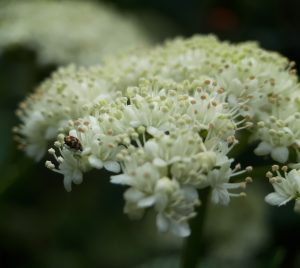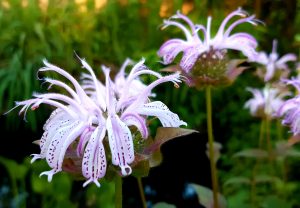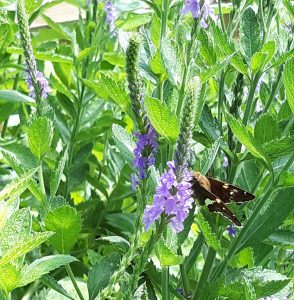If You Like Flowers, Thank an Insect
No doubt you have noticed that insects like flowers, but did you know that this wasn’t always the case? Not all plants have flowers; think ferns and pine trees for example. Some flowering plants depend on wind for pollination, like grasses and oak trees. Did you know these even had flowers? Non-showy flowers, like those of grasses and oaks lack petals and therefore, don’t need to put energy into traits like large petals, showy colors or aroma. Flowers are a plant’s advertisement to their target pollinator. The diversification of flowering plants really took off with the advent of plant-pollinator relationships between 90-130 million years ago. Insects played a significant role in the evolution of these flowering plants. It is, after all, how at least three-quarters of all plants reproduce. Without insects, they wouldn’t be here. We can look for flower features as clues to just who are their target pollinator. Here are some of those clues:

If the flowers are a cluster of smaller flowers in the overall shape of an umbrella, in shades of white, cream, or light green and with a spicy, yeasty, musky or fermented aroma then the targeted insect is likely a beetle. Beetles are notoriously clumsy at flying, so a large landing pad, like those of Viburnums and Silky or Gray Dogwood are ideal. Beetles are largely attracted by aroma, so putting energy into flower petal color is a waste. Instead, beetles are drawn by smell, so these plants focus on that trait to lure in their guests. Beetles are also mostly interested in pollen, so beetle-pollinated plants produce an abundance of pollen and sometimes little to no nectar.

If the flowers lack aroma, are tubular in shape with or without spots on the throat and in shades of white, blue, purple or pink then the likely pollinator is a bee. Plants with these traits include Beebalm, Agastache, Penstemon or anything in the mint family. While we can’t see it, these plants will also reflect ultraviolet light that bees can see. Spots on the throat of the flower are called bee guides. Bee guides are like lights on a landing strip that direct the bee where to find the nectar. Female bees collect nectar and pollen to feed themselves and their babies, while males only feed on nectar. For this reason, males and females often visit different kinds of flowers with females visiting more, but both contributing to pollination.

If the flowers are in clusters, lack aroma and are brightly colored they are most likely pollinated by butterflies. Flowers like these include those in the composite family, like Sunflowers, Silphiums and Coneflowers.
If the flowers are maroon in color and smell of rotting flesh the likely pollinators are flies. These plants mimic death and decay to attract flies. Consider flowers like Paw Paw and Wild Ginger.
In recognition of the upcoming National Pollinator Week, June 21-27th, consider diversifying the flower types in your yard to support our troubled insects and help perpetuate the flowers we enjoy.
CLIFFTOP, a local nonprofit organization, is focused on preserving and protecting area bluff lands.
A version of this article appeared in the June 16, 2021 edition of the “Republic-Times.”
©2021 all content rights reserved Clifftop NFP
Comments are currently closed.
